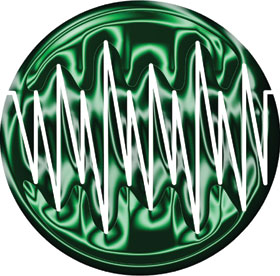

Energy efficiency has a significant impact on energy savings but, according to Schneider Electric, technologies designed to lower energy costs could cause unexpected power quality issues.
“A capital investment in power factor correction and harmonic filtering equipment can result in a healthy return on investment depending on the utility’s demand rate structure, production quality cost due to harmonics and voltage fluctuations in the distribution system,” says Shaun Wilson, professional services director, at Schneider Electric South Africa.
Power factor correction devices improve overall electrical efficiency upstream of their point of connection in the electrical network and can be used to minimise utility kVA demand charges. Wilson explains that power electronic devices that have rapid and frequent load variations have become abundant today due to their many process control related and energy saving benefits. “However, they also bring a few major drawbacks to electrical distribution systems, such as harmonics and rapid change of reactive power requirements. Harmonics may disrupt the normal operation of other devices and increase operating costs. Symptoms of problematic harmonic levels include overheating of transformers, motors and cables, thermal tripping of protective devices and logic faults of digital devices and drives. Harmonics can also cause vibrations and noise in electric motors, transformers, and reactors,” he adds.
The lifespan of many devices can be reduced by elevated operating temperature. Plus, rapid reactive power changes demand timely reactive power (VAR) compensation. “Lack of appropriate and adequate VAR compensation can lead to voltage fluctuations in the electrical distribution system, impacting equipment operation, as well as product quality,” says Wilson.
An active harmonic filter (AHF) provides an effective means to mitigate harmonics, reduce process-related voltage fluctuations and improve equipment operating life and system capacity. As part of a power factor correction and harmonic filtering system, benefits include:
* Transformer and distribution network offloading. Improving power factor correction reduces kVA loading of the distribution network such that additional process equipment may be added without the need for incremental investment in transformers and distribution equipment.
* Ensuring compliance with harmonic standards.
* Improving reliability of the distribution network and process equipment.
* Reducing overheating of transformers, motors and cables to prolong the lifespan of these components.
Many industrial facilities place poor power quality at the top of the list of inefficiency factors responsible for losses due to reduced productivity and lower quality of products. The fact is, large industrial, commercial and institutional power users can benefit from centralised medium voltage reactive power compensation systems that typically require lower initial capital expenditures (ZAR/kVAR) than low voltage solutions while still addressing the most common power quality problems.
“Medium voltage metal-enclosed compensation systems provide a centralised solution approach with attractive installation options supporting the scale and scope of large electrical services. Many large commercial and institutional customers with medium voltage distribution network can also take advantage of medium voltage reactive compensation systems,” says Wilson.
Low voltage capacitor compensation systems can provide the similar benefit of a centralised solution at an attractive cost for most mid and small industrial, commercial and institutional users. It offers flexible, yet effective power factor compensation system in the low voltage network.
ReactiVar and Accusine
Schneider Electric provides a comprehensive power quality solutions portfolio, namely ReactiVar and AccuSine, to help companies improve their energy efficiency.
ReactiVar, a power factor correction fixed capacitor (PFCD), is ideally suited for power factor correction in applications where the load does not change or where the capacitor is switched with the load, such as the load side of a motor starter. Assemblies are available with three fuses and three blown-fuse indicators.
The AV6000 anti-resonant power factor correction systems are designed to provide power factor correction in today’s distribution networks with certain level of specific harmonic contents. The series capacitor/reactor combination is tuned well below the first dominant harmonic thus preventing resonance and harmonic magnification. The AV7000 filtered systems are specifically designed for harmonic filtering with power factor correction as a secondary benefit. The series capacitor/reactor combination is tuned close to the fifth harmonic (4,7 x 50 Hz). Such close tuning to the target harmonic increases the effectiveness of harmonic energy absorption of the capacitor/reactor stage.
The AV5000 standard automatic power factor correction banks are designed for centralised power factor correction to supply varying amounts of reactive power required to compensate for changing load conditions.
AccuSine PCS active harmonic filter (AHF) injects harmonic and reactive current to limit harmonic distortion and improve displacement power factor for the electrical distribution system. As a full spectrum product, AccuSine PCS measures the entire load current, removes the fundamental frequency component and injects the inverse of the remaining wave form for nearly complete cancellation of harmonic current.
For more information contact Belinda Aslett, Schneider Electric SA, +27 (0)11 254 6400, [email protected], www.schneider-electric.com
| Tel: | +27 11 254 6400 |
| Email: | [email protected] |
| www: | www.se.com/za/en/ |
| Articles: | More information and articles about Schneider Electric South Africa |

© Technews Publishing (Pty) Ltd | All Rights Reserved